Facial hair makes skin appear darker by shadowing the natural complexion and texture of the skin. It also decreases the confidence in women as they hinder the “perfectly groomed lady” norm of society.
While removing the hair is a commonly used way to address unwanted facial hair, bleaching can be used to lighten the hair and brighten the skin without much effort. However, it is not a harmless method of dealing with facial hair.
So, let us talk about the uses, benefits, side effects, and ways to use facial hair bleach in this article.
Table of Contents:
- Part 1: What is Facial Hair Bleaching?
- Part 2: Bleaching Facial Hair Side Effects
- Part 3: Bleaching Facial Hair Before and After
- Part 4: Step-by-Step Guide to Bleaching Facial Hair
- Part 5: Home Remedies for Bleaching Facial Hair
- Part 6: Best Facial Hair Bleaching Creams and Facial Hair Bleaching Kits
- Part 7:FAQs
Part 1: What is Facial Hair Bleaching?
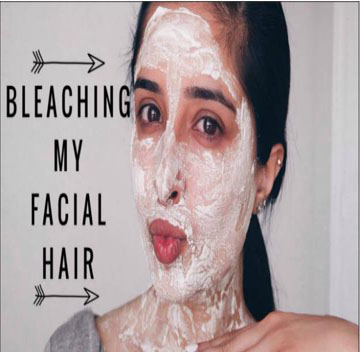
Bleach is a mixture of a cream and a powder substance. The cream forms the base of the product and the powder is an accelerating substance that boosts the effects of the bleach. The activator substance is actually a chemical that breaks down the melanin pigment in the hair and strips it of color. Consequently, the color of the hair matches the skin and they become less noticeable.
The chemicals used in the bleaching powder include hydrogen peroxide, sodium hypochlorite, ammonia, and mercury. These chemicals lighten the hair shaft by reducing the amount of melanin in the hair. In addition to lightening the facial hair, bleach also makes the skin tone even and glowing.
Furthermore, bleach works best for fine and unprocessed hair like peach fuzz on the face. So, it is commonly used on upper lips, sideburns, cheeks, forehead, and unibrow hair. However, it might be ineffective for thick chin hair or you would have to use a greater amount of activator for the chin area.
Part 2: Bleaching Facial Hair Side Effects
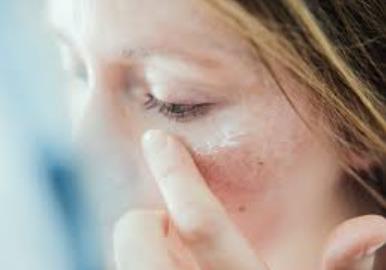
Although bleaching is a nearly painless and effortless method of dealing with objectable facial peach fuzz all at once without the hair, it comes with several bleaching hair side effects given below.
- Skin dryness and irritation: As bleaching contains chemicals and no ingredients to moisturize the skin, your skin can feel dry immediately after the treatment. Additionally, it can cause skin redness and itching by irritating the skin.
- Sun damage: Melanin in the skin and hair offers some degree of protection against the sun. Bleaching reduces the amount of protective melanin and makes skin prone to sun damage.
- Skin burns: The excessive use of bleach or the addition of excess activator substance can affect the skin’s superficial layer, causing skin peeling and burns.
- Dermatitis: The chemicals present in the bleach can cause skin inflammation and lead to contact dermatitis which presents in the form of redness, hives, swelling, and blisters.
- Acne: Some bleach creams contain steroids. These steroids can result in steroidal-stimulated acne in the form of whiteheads, blackheads, red bumps, and pustules.
- Skin discoloration: Excessive use of bleach creams with hydroquinone can cause black-blue discoloration of the skin, a condition called exogenous ochronosis.
Part 3: Bleaching Facial Hair Before and After
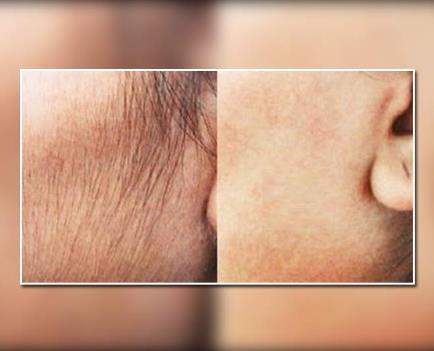
Bleaching facial hair offers a clear difference in the texture, tanning, pigmentation, and overall appearance of the skin. Also, the hair is virtually invisible when the right amount of bleach is used according to the density and thickness of the hair.


The results of bleaching facial hair before and after are given below in the form of a picture.
Part 4: Step-by-Step Guide to Bleaching Facial Hair
Below is your ultimate step-by-step guide to bleaching facial hair.
Step 1: Skin Preparation

First, wash your face and hands thoroughly to sanitize the area to be bleached and avoid the side effects. Then wear a headband to keep scalp hair away from the face.
You can also use a moisturizing toner to prepare the skin. Finally, let the face air dry.
Step 2: Preparation of the Bleach Cream
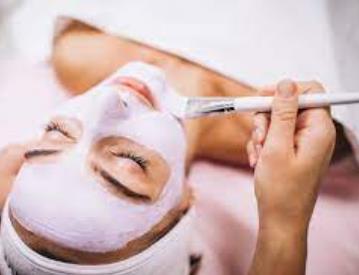
Take the bleach cream and read its instructions. Most creams work well when mixed in a 7:1 of cream and the activated substance. Stir it with a spatula in a plastic bowl until it is uniformly mixed.
Step 3: Application of the Product
Using the spatula, apply the mixture all over your face with the spatula so that your hair is covered and the layer is not too thick. Also, avoid the eye areas and any area with active acne.
Step 4: Monitoring the Progress
Wait for 8 minutes and remove the cream from a small patch to check the progress. Then let it be according to the need for a few more minutes without exceeding 15 minutes in total.
Step 5: Removing the Bleach Cream
Once you are satisfied with the results, remove the cream with the spatula of a moist cotton pad and wash your face thoroughly with water and a gentle cleanser so that no chemical is left on your skin.
Step 6: Post-Bleaching Care
Lastly, ice your face with an ice cube wrapped in clean clothing and moisturize it well. Also, do not go under the sun for 24 hours after bleaching.
Part 5: Home Remedies for Bleaching Facial Hair
The commercially available bleach might be unsuitable for sensitive skin because of the chemicals in it. So, we have some homemade bleaching masks for you.
1. Tomato or Potato

Both tomato and potato are natural bleaching agents as tomatoes contain lycopene and potatoes have azelaic acid. These ingredients lighten the skin tone and also work on facial hair.
You can directly rub a slice of tomato or potato on your skin or grind them to make juice and use it by mixing it with lemon juice.
2. Papaya and Milk
Papaya contains alpha-hydroxy acids and milk has lactic acid. Both of these ingredients when mixed together work wonderfully to bleach the facial hair and lighten the skin.
You can mix both together in a ratio of 5:1 and make a facial bleach mask.
3. Orange Peel Powder and Yogurt
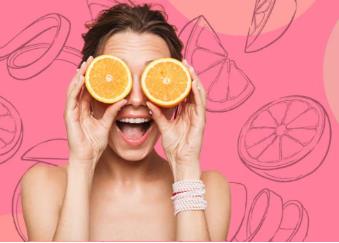
Orange peel is a rich source of citric acid and vitamin C, the best ingredients to brighten the skin and reduce melanin production in the hair and yogurt consists of lactic acid which adds to the benefits of orange peel powder.
Using orange peel powder and a yogurt mask every day can help you bleach facial hair.
Part 6: Best Facial Hair Bleaching Creams and Facial Hair Bleaching Kits
Below are the best 3 facial hair bleaching kits. These kits contain enough cream to be used for a few months. However, the same kits are available in the form of a one-pack bleach cream for single use.
1. Sally Hansen Extra Strength Creme Bleach, Complete Kit

Sally Hansen Creme Bleach features a cream, an activator, a pre-treatment conditioner, a plastic bowl, and a spatula. So, it has everything you need from preparation to bleaching the facial hair.
It makes the unwanted hair invisible within 8 minutes. Additionally, the infused aloe vera makes it gentle on the skin and the sweet almond smell enhances the experience.
2. Jolen Mild 30 ml Facial Bleach Cream Kit
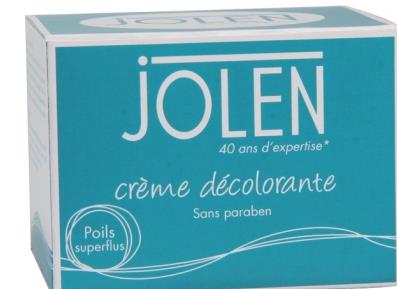 Jolen is one of the best bleach creams you can come across because of the presence of aloe vera and mild chemicals in the cream. Also, it has no mercury. This kit comes with a large mixing bowl, a spatula, an accelerator, and a cream.
Jolen is one of the best bleach creams you can come across because of the presence of aloe vera and mild chemicals in the cream. Also, it has no mercury. This kit comes with a large mixing bowl, a spatula, an accelerator, and a cream.
Moreover, it works well for body hair in addition to facial hair.
3. VLCC Insta Glow Diamond Bleach
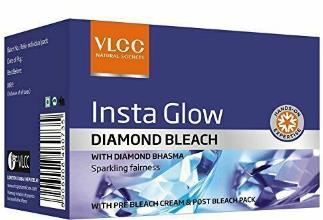
The last product on the list of our recommendations is VLCC Insta Glow Diamond bleach which contains diamond hasma and aloe vera to purify and hydrate the skin.
This kit includes pre and post-bleaching treatments, an activator, and bleach cream. Sadly, you have to buy a mixing bowl separately or use the one you already have.
Part 7: FAQs
Is Bleaching Facial Hair Safe?
Yes, bleaching facial hair is safe when done in a moderate consistency while following the instructions and safety measures. Also, what type of bleach you use is important. A bleach cream with an excess amount of ammonia, mercury, and hydrogen peroxide can be harmful to the skin.
How Long Does Facial Hair Bleaching Last?
Facial hair bleaching lasts until the hair you bleach falls off and new hair grows. On the face, it typically takes 2 to 4 weeks. So, you can bleach once a month for optimal results. Also, avoid bleaching without the gap of 15 days between your sessions.
Is Bleaching Facial Hair Safe during Pregnancy?
Yes, bleaching is considered safe during pregnancy because the amount of chemicals in the bleach is very little to harm the baby. However, it is best to keep the use of bleach minimal during this time period.
Does Bleaching Increase Facial Hair Growth?
No, bleaching has no potential to affect facial hair growth. A bleach cream acts on the hair over the surface of the skin and never invades it to go to the roots. So, it does not cause an increase in facial hair growth.
Conclusion
Facial hair bleaching can be used as a pain-free and quick solution to ugly facial hair without having to remove it. Such creams can make the hair disappear by lightening it, removing tan from the skin, and making it glow. Just like with other methods of hair removal, you have to repeat the process once a month.
Furthermore, care must be taken to avoid the over-usage of the cream and get the right bleaching kit for your skin type. So, you should decide how you want to deal with facial hair by keeping your priorities and needs in mind.

 By myulikeadmin
By myulikeadmin



